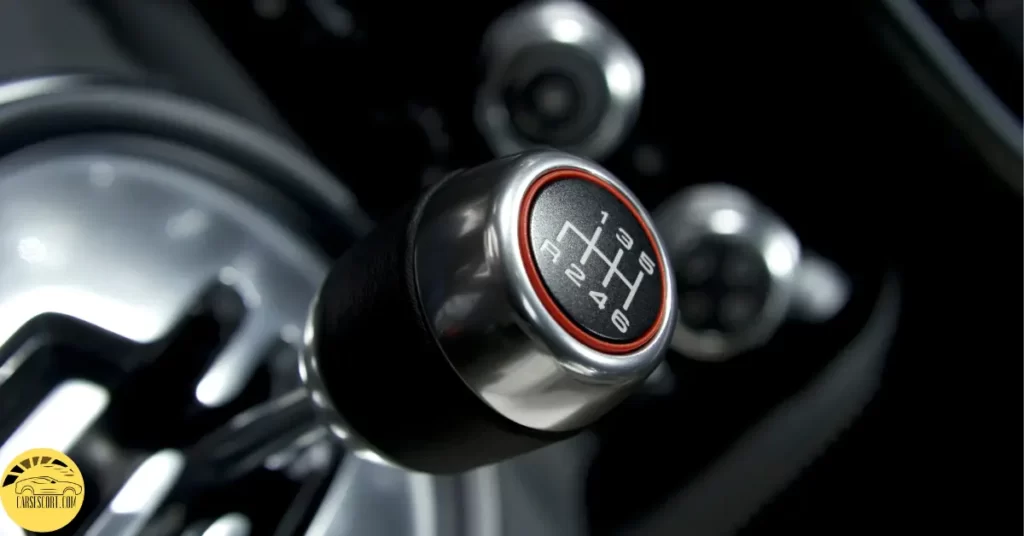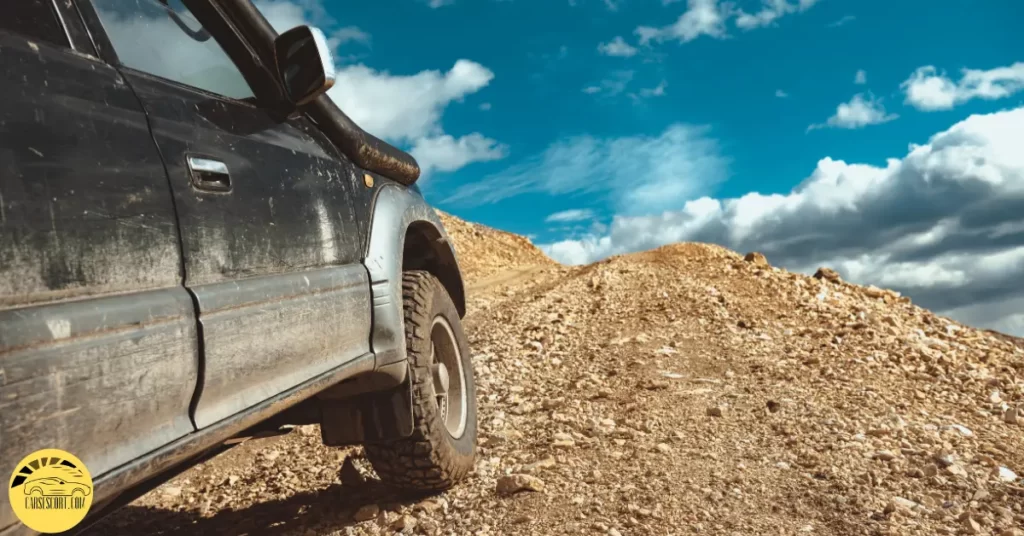When it comes to driving, ensuring your safety and the safety of others should always be a top priority. One crucial aspect of safe driving is being in the proper gear before starting down a hill. While it may seem like a simple task, neglecting to engage the correct gear can have serious consequences.
Selecting the appropriate gear before starting down a hill allows you to maintain better control over your vehicle’s speed and stability. Lower gears provide more engine braking, which helps to slow down the vehicle and prevents it from gaining excessive speed while descending. This can be crucial, especially on steep or winding hills, as it reduces the reliance on your brakes and minimizes the risk of them overheating or failing.
In this article, we will explore why it is essential to be in the proper gear before descending a hill and how it contributes to maintaining control, preventing accidents, and prolonging the life of your vehicle.
Why should you be in the proper gear before starting down a hill?

1) Being in the proper gear before descending a hill helps you maintain control over your vehicle.
By shifting to a lower gear, such as second or third, you can take advantage of the engine’s braking power. This allows you to better manage your speed and prevents the vehicle from gaining excessive momentum, which could make it difficult to slow down or stop.
2) Engaging the appropriate gear before going downhill enhances your vehicle’s braking efficiency.
Engaging the appropriate gear before going downhill enhances your vehicle’s braking efficiency. When you downshift to a lower gear, the engine’s compression provides additional resistance, acting as a supplemental braking force.
This reduces the reliance on the vehicle’s primary braking system, such as the brakes themselves, which can overheat and become less effective when constantly applied for extended periods, as in the case of descending a hill.
3) Choosing the correct gear also helps improve traction while descending a hill.
A lower gear ensures that the engine is actively engaged in the vehicle’s movement, distributing power to the wheels. This power distribution allows for better traction and stability, especially in situations where the road surface is slippery due to rain, snow, or loose gravel.
By maintaining traction, you reduce the risk of skidding or losing control of the vehicle.
4) Descending a hill without being in the proper gear can put excessive strain on your vehicle’s braking system
Descending a hill with improper gear can put excessive strain on your vehicle’s braking system, leading to overheating. Overheated brakes can experience a phenomenon known as brake fade, where the braking performance significantly diminishes due to the excessive heat generated.
By downshifting to a lower gear, you can share the braking load with the engine, reducing the stress on the brakes and preventing them from overheating.
5) Being in the appropriate gear before starting down a hill also helps protect your vehicle’s transmission system.
Descending a hill in a high gear, such as fifth or sixth, can cause strain on the transmission, potentially leading to premature wear and tear. The excessive load on the transmission system can result in increased friction, heat, and possible damage.
By shifting to a lower gear, you ensure that the transmission operates within its optimal range, preventing unnecessary stress and prolonging its lifespan.
6) Engaging the proper gear before descending a hill can contribute to better fuel efficiency.
When you downshift, the engine operates at a higher RPM (revolutions per minute), allowing it to produce more power. This power helps control the vehicle’s speed without relying solely on the brakes, which consume fuel.
By utilizing the engine’s braking power, you reduce the need for excessive braking, thereby saving fuel and improving overall efficiency.
7) By being in the correct gear, you reduce wear on your vehicle’s brake pads and rotors.
When brakes are constantly engaged to control speed, they experience increased friction and heat, resulting in faster wear and potential damage. By utilizing engine braking through proper gear selection, you distribute the workload between the engine and the braking system, reducing wear on the brake components and extending the lifespan of your brake pads and rotors.
8) Being in the proper gear can help you avoid brake failure.
Being in the proper gear before starting down a hill can help you avoid brake failure. Constantly relying on the brakes to control your speed while descending a hill can lead to overheating, which may cause brake fluid to boil.
When brake fluid boils, it creates air bubbles in the system, resulting in a loss of hydraulic pressure. This can lead to brake failure, leaving you with limited or no braking power.
By downshifting to a lower gear and using engine braking, you reduce the strain on the braking system, minimizing the risk of brake failure and ensuring your safety.
9) Engaging the correct gear before descending a hill significantly enhances overall safety.
Engaging the correct gear before descending a hill significantly enhances overall safety. It allows you to maintain better control, prevent accidents, and respond effectively to any unexpected situations.
By utilizing engine braking and distributing the workload between the engine and brakes, you reduce the risk of losing control of your vehicle, skidding, or experiencing brake failure.
It provides you with greater stability, traction, and responsiveness, ultimately ensuring a safer driving experience for you, your passengers, and other road users.
You May Also Like To Read:
Cons of using the wrong gear when going uphill or downhill
Decreased control
Using the wrong gear can result in reduced control over your vehicle. If you’re going uphill in too high a gear, you may struggle to maintain speed and control over the vehicle.
Similarly, if you’re going downhill in too low a gear, you may have difficulty maintaining a safe speed and controlling the vehicle’s descent.
Increased strain on the engine
Choosing the wrong gear can put unnecessary strain on your vehicle’s engine. If you’re going uphill in too high a gear, the engine will have to work harder to maintain speed, potentially leading to overheating or engine damage.
On the other hand, using too low a gear while going downhill can cause the engine to rev too high, resulting in excessive wear and tear.
Reduced fuel efficiency
Optimal gear selection is essential for fuel efficiency. Using the wrong gear while climbing uphill can cause the engine to consume more fuel than necessary.
Similarly, descending in the wrong gear can lead to increased fuel consumption due to excessive revving or engine braking.
Increased wear on the transmission
Using the incorrect gear when going uphill or downhill can cause premature wear and tear on your vehicle’s transmission. The transmission is designed to distribute power effectively and efficiently, but using the wrong gear can place additional stress on its components, leading to potential damage and expensive repairs.
Safety concerns
Using the wrong gear while tackling inclines or declines can compromise safety. It can result in decreased stability, reduced maneuverability, and difficulty maintaining a consistent speed, which can lead to accidents or loss of control.

FAQ
What gear should you be in before starting down a hill?
Before starting down a hill, it is generally recommended to shift to a lower gear, such as first or second, depending on the steepness of the slope.
This helps to control the speed and provides engine braking, reducing the strain on your brakes. By being in a lower gear, the engine’s resistance will help slow down the vehicle naturally.
However, it’s important to consider the specific recommendations in your vehicle’s manual, as different vehicles may have different guidelines.
What gear for downhill driving automatic?
For downhill driving in an automatic transmission vehicle, it is generally recommended to use a lower gear like “L” (low) or “B” (engine braking) mode that are designed for descending steep slopes. These modes help to engage engine braking and provide better control of the vehicle’s speed.
What gear should you not use when going downhill?
When going downhill, you should avoid using the highest gear available, such as overdrive or the top gear as will as the “N” neutral gear.
These gears are designed for maintaining speed or cruising on flat terrain and using them while descending a hill can lead to a loss of control over the vehicle’s speed.
High gears reduce engine braking and can put more strain on the brakes, potentially causing them to overheat and lose effectiveness. It’s best to shift to a lower gear to utilize engine braking and maintain better control over your vehicle’s speed.
Can I switch from D to N while driving?
No, it is not advisable to switch from “D” (drive) to “N” (neutral) while driving. Engaging neutral while the vehicle is in motion can cause a loss of control as you won’t be able to accelerate or decelerate effectively. Additionally, the transmission will disengage, potentially causing damage to the engine or transmission.
It’s important to keep the vehicle in the appropriate gear (usually “D” or a lower gear) while driving to ensure control, engine braking, and the ability to respond to traffic situations.
Should you leave your car in 1st gear on a hill?
Leaving your car in 1st gear on a hill can be useful to prevent the vehicle from rolling backward. If you are stopped on an incline, engaging 1st gear (or the appropriate gear in a manual transmission) can provide additional resistance and help keep the vehicle stationary without relying solely on the brakes.
My Final Thoughts
Why should you be in the proper gear before starting down a hill? Ensuring your vehicle is in the proper gear before starting down a hill is crucial for various reasons. It helps you maintain control, enhances braking efficiency, improves traction, prevents brake overheating and failure, protects the transmission system, enhances fuel efficiency, and minimizes wear on brake components.
By following this important practice, you prioritize your safety, prolong the lifespan of your vehicle, and contribute to a more enjoyable and stress-free driving experience.
Remember, taking a few moments to engage the correct gear can make a significant difference in maintaining control and preventing accidents while navigating downhill roads.
Stay safe and drive responsibly.
Affiliate Disclosure: Cars Escort is a participant in the Amazon Services LLC Associates Program. As an Amazon Associate, we earn from qualifying purchases made through affiliate links on our site. Read Our Disclaimer .

